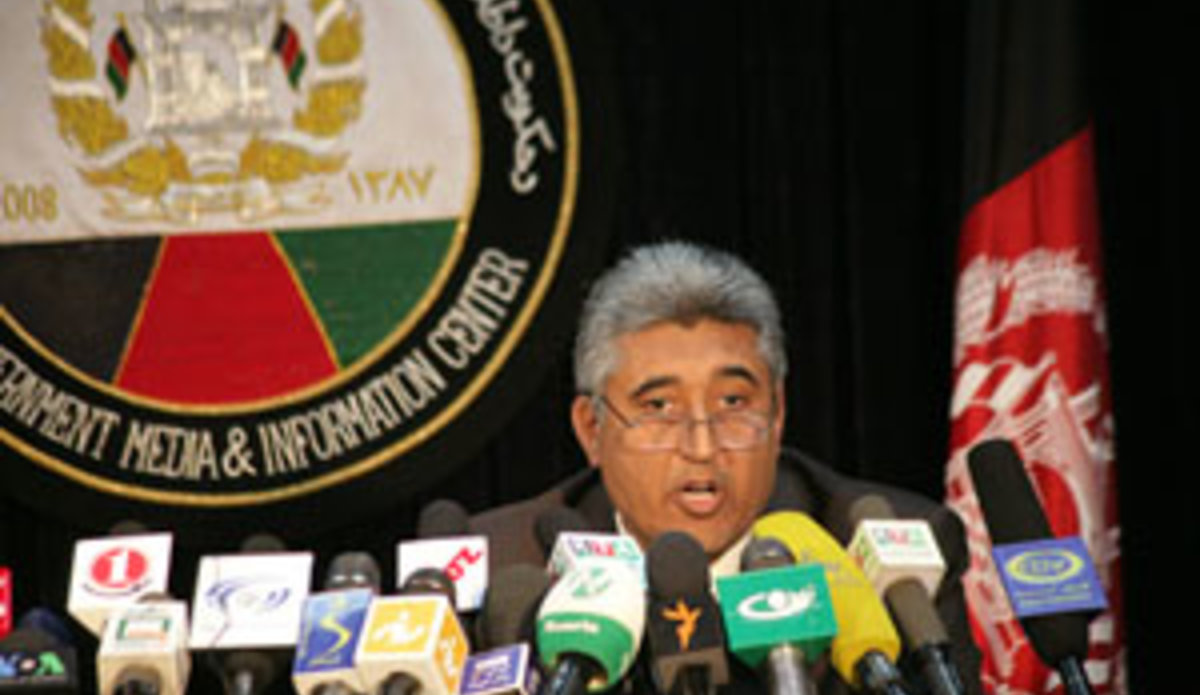A secret weapon in Afghanistan: Agriculture by Mohammad Asif Rahimi and Tom Vilsack
15 May 2010 - So it was not surprising that during this week's meetings in Washington between US and Afghan officials that agriculture was a principal topic of discussion.
In Afghanistan, 85 per cent of the population relies on agriculture to earn a living, and strengthening Afghanistan's agricultural sector is a critical element in stabilizing the nation. But until the agriculture sector can support legitimate crops such as wheat and fruits, the Taliban will continue to prey upon disaffected, out-of-work youth and push the production of poppy.
Unfortunately, poppy production provides little return to the farmers; pomegranates will earn a farmer five times that of poppy on the open market, almonds will earn seven, and grapes will earn eight times as much.
That is why the United States and Afghanistan are working together with a shared strategy to rebuild Afghanistan's once-vibrant agricultural economy. Our efforts are already yielding results in troubled provinces such as Helmand, the heart of Afghan poppy production.
The strategy is fourfold: First, we must increase the productivity of staple crops such as wheat, introduce complementary crops such as soybeans, and improve the yields of cash crops such as horticulture and nuts.
Second, we must protect Afghanistan's natural resources by investing in watershed management, sustainable forestry efforts and soil conservation.
Third, we must redouble our efforts to rebuild the country's agricultural marketing system and return Afghanistan to its once-prominent position as the fruit and nut epicenter of Central Asia.
Fourth, our countries must continue to work together to restructure Afghanistan's Ministry of Agriculture by recruiting competent professionals, especially in the rural areas where extension agents with technical know-how and expertise can make a real difference to farmers and herders.
The possibility of the turnaround we envision is real. International demand for Afghan agriculture is returning.
In Dubai recently, at the region's biggest food and trade expo, Afghanistan's tiny stall was overrun with customers from Europe, Africa and the Middle East with orders for dried fruit and nuts. For the first time, Afghan apples and other fresh fruit are being air freighted to India.
Just recently, a Kabul businessman obtained his certification to begin exporting raisins to Europe. And, in what might be the biggest boon to Afghanistan's agricultural economy thus far, the nation's first concentrated juice factory opened near Kabul in October 2009, selling out its entire production for 2010 in just six weeks. The plant employs hundreds of Afghans and is planning an expansion so it can continue to ship its products across the globe. Other similar facilities are being planned across the country.
Furthermore, the US and Afghan governments are working with Afghan farmers to introduce new production and post-production technologies, while improving existing crops with enhanced cultivation and seed varieties. American support is helping to develop Afghan grading, packaging and sanitary methods per international standards. And together, we are building the infrastructure and opening the transportation routes necessary to get Afghan grains, fruits and nuts to consumers.
The Afghan Ministry of Agriculture also needs help to build research and agricultural extension services — from satellite mapping to experts standing in a field teaching farmers. This is an area where USDA's assistance is crucial. USDA has contributed more than 100 highly skilled individuals to this effort — foresters, soil and plant scientists, marketing specialists, and water and rangeland specialists — all with a special ability to share their knowledge through demonstration.
USDA is partnering with the US Army National Guard, the State Department, the US Agency for International Development, other US federal agencies and, most important, Afghans, to solve complex agricultural issues.
Moreover, the Afghan government has reorganized its Cabinet so that ministries focused on solving the problems facing its rural communities are teamed together: agriculture, electricity, water, construction and counternarcotics.
For 85 per cent of the Afghan people, the path to a better job and life for their family is likely to pass through a farm. That is why, despite the challenges that certainly lie ahead, we are committed to building a better life for the Afghan people by working together to rebuild its once-vibrant agricultural economy.
Tom Vilsack is the United States Secretary of Agriculture, and Mohammad Asif Rahimi is the Afghan Minister of Agriculture, Irrigation and Livestock.
 UN
UN






